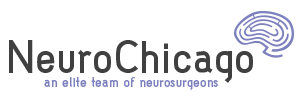ISCHEMIC STROKE
Ischemic Stroke occurs when an artery supplying the brain with blood becomes blocked, suddenly decreasing or stopping blood flow and ultimately causing brain cells to die and some body functions to become impaired. This kind of stroke accounts for approximately 80 percent of all strokes.
There are two types of ischemic or clot-caused strokes, thrombotic and embolic.
A thrombotic stroke occurs when a blood clot forms within an artery that supplies blood to the brain. An embolic stroke occurs when a plaque fragment or blood clot travels to the brain from the heart or another artery supplying the brain. These types of blockages in the arteries may be due to atherosclerosis or hardening of the arteries caused by cholesterol or plaque build-up.
HEMORRHAGIC STROKE
Hemorrhagic Stroke occurs when a blood vessel in the brain breaks or ruptures. Long-term high blood pressure can weaken blood vessels in the brain and eventually cause a hemorrhagic stroke (cerebral hemorrhage).
Hemorrhagic strokes are divided into two types, intracerebral hemorrhage (ICH) and subarachnoid hemorrhage (SAH). An intracerebral hemorrhage is characterized by bleeding into the brain itself. High blood pressure may cause small blood vessels to bulge and eventually burst spilling blood into the brain. The bleeding damages brain cells and the damaged area cannot function properly. A subarachnoid hemorrhage is characterized by bleeding into the area that surrounds the brain. This type of hemorrhage has many possible causes but is usually the result of a ruptured aneurysm. Blood from a ruptured aneurysm (a weak and balloon-like bulging portion of an artery) may bleed into the space between two membranes on the surface of the brain. The bleeding can increase pressure in and on the brain, injuring brain cells and may affect brain function. A subarachnoid hemorrhage may also be caused by bleeding from a tangle of abnormal blood vessels called an arteriovenous malformation (AVM).
STROKE RISK FACTORS
Prevention of a major cerebrovascular event from occurring is still the best treatment for stroke. The following risk factors can be addressed to help reduce the risk of stroke.
Hypertension – High blood pressure is the leading cause of both ischemic and hemorrhagic strokes.Weight – Even modest weight gain (24 – 43 pounds over 16 years) almost doubles the chances of suffering a stroke.
Cigarettes – Smoking doubles the chance of a stroke.Carotid Stenosis – The build up of fatty plaque on the insides of the carotid artery increases the chance of an ischemic stroke.
High Cholesterol – High cholesterol levels can promote carotid stenosis and lead to a stroke
STROKE WARNING SIGNS
It is important to learn and recognize the symptoms of stroke. The faster you recognize stroke symptoms, the sooner you can get to the hospital and receive treatment, and the sooner you receive treatment, the more effective it can be. If you experience one or more of these symptoms, don’t wait call 911 immediately.
Sudden severe headache with no known cause. Often described as “worst headache ever.”Sudden dimness or loss of vision in one or both eyes. Unexplained blurring or intolerance to light.Sudden numbness or weakness of face, arm, or leg on one side of the body.Unexplained dizziness, unsteadiness or sudden falls.Loss of speech, or trouble talking or understanding speech.
DIAGNOSTIC TOOLS
Angiogram CT MRI NOVA
TREATMENTS
When patients experience an ischemic or hemorrhagic stroke, an experienced team specifically trained to treat such cases can have a crucial impact on their care and outcomes. Dr. Farhat offers a complete continuum of neurovascular services, including traditional clipping procedures, stereotactic radiosurgery applications and the latest endovascular techniques, such as coiling and stenting. (See individual diagnoses for potential treatments)
